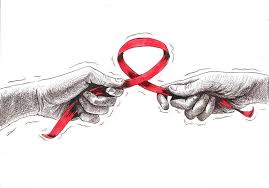Who Is at Risk for HIV?
Understanding HIV Risk Across Different Groups
HIV Can Affect Anyone
HIV (Human Immunodeficiency Virus) does not discriminate. It can affect individuals of any age, gender, sexual orientation, race, or geographic location. However, some groups face a higher risk due to a combination of behavioral, social, and structural factors. These include the communities they live in, their access to healthcare, and their risk behaviors.
Understanding which groups are most affected and why is essential in helping reduce new HIV infections and improve health outcomes.
Communities with Higher HIV Prevalence
How Community Prevalence Increases Risk
One of the most significant factors influencing HIV risk is the prevalence of HIV in the community. When you live in or are sexually active within a community where many people have HIV, the chances of coming into contact with someone who is HIV-positive are significantly higher.
This is particularly true for individuals who engage in unprotected sex or share needles. In such settings, even low-risk behaviors can result in exposure due to the concentration of HIV within the population.
Using Data to Understand Local Risk
The Centers for Disease Control and Prevention (CDC) provides valuable tools like the HIV, STD, Hepatitis, and TB Atlas Plus, which offers insights into the HIV prevalence across different U.S. states and counties. These statistics can help individuals and public health professionals identify which communities are most affected.
Subpopulations at Higher Risk for HIV
Gay and Bisexual Men
In the United States, gay, bisexual, and other men who have sex with men (MSM) are the most affected group. According to the CDC, 68% of the 30,635 new HIV diagnoses in 2020 were among gay and bisexual men.
Among these, African American and Latino men are disproportionately affected. Cultural stigma, limited access to healthcare, and discrimination often contribute to the higher infection rates in these communities.
People Who Inject Drugs
People who inject drugs (PWID) remain a high-risk group for HIV. Sharing needles, syringes, or other injection equipment increases the likelihood of HIV transmission, especially in communities with high HIV prevalence. Injection drug users are also more vulnerable due to barriers in accessing harm reduction services and HIV prevention tools.
High-Risk Behaviors and HIV Transmission
Anal and Vaginal Sex
In the U.S., HIV is primarily spread through anal and vaginal sex without using a condom or HIV prevention medications. Among these, anal sex is the riskiest behavior due to the fragile tissues in the rectum, which are more susceptible to tearing and allowing HIV to enter the bloodstream.
Sharing Needles and Injection Equipment
Sharing injection equipment is another major mode of transmission. Whether for recreational drugs, hormones, or steroids, using contaminated equipment can transmit HIV from one person to another. Access to clean syringes and needle exchange programs can significantly reduce this risk.
Effective HIV Prevention Strategies
Pre-Exposure Prophylaxis (PrEP)
PrEP is a daily medication that significantly reduces the risk of contracting HIV. It is especially effective for individuals in high-risk groups, including MSM, people with HIV-positive partners, and those who inject drugs.
Post-Exposure Prophylaxis (PEP)
PEP is a short-term treatment taken within 72 hours of potential exposure to HIV. It’s used as an emergency prevention method and must be started as soon as possible to be effective.
Treatment as Prevention (TasP)
People living with HIV who take antiretroviral therapy (ART) and maintain an undetectable viral load cannot transmit the virus to others through sex. This approach, known as Undetectable = Untransmittable (U=U), is a powerful prevention tool.
What to Do If You Think You’re at Risk
Get Tested for HIV
If you believe you may be at risk for HIV, the first step is to get tested. HIV testing is the only way to know your status. Today, many tests are quick, painless, and available for free or at a low cost.
You can:
- Visit a healthcare provider
- Find a local testing center using the HIV Services Locator
- Purchase an FDA-approved home HIV test kit
Know Your Status and Act Accordingly
- If you test positive: Start HIV treatment immediately. With early diagnosis and consistent medication, you can live a long, healthy life and avoid passing the virus to others.
- If you test negative: You can take proactive steps such as using condoms, starting PrEP, and avoiding high-risk behaviors.
In-Depth HIV Risk Information by Group
The CDC offers extensive information on how HIV affects specific groups. Here is an overview of the key categories:
By Sexual Orientation
- HIV and Gay and Bisexual Men
- HIV and African American Gay and Bisexual Men
- HIV and Hispanic/Latino Gay and Bisexual Men
By Gender
- HIV and Men
- HIV and Women
- HIV and Pregnant Women, Children, and Infants
By Race and Ethnicity
- HIV and African Americans
- HIV and Hispanics/Latinos
- HIV in the United States by Race/Ethnicity
By Age Group
- HIV and Youth
- HIV in the United States by Age
By Region
- HIV in the Southern United States
- HIV in the United States by Region
By Substance Use
- HIV and People Who Inject Drugs
- HIV and Substance Use in the United States
Other Groups at Higher Risk
- HIV and Sex Workers
- HIV and People Who Are Economically Disadvantaged
Conclusion
HIV is a public health issue that affects diverse groups across the United States. While no one is immune, some populations face higher risks due to community prevalence, behavioral factors, and systemic inequalities. Understanding your personal risk and the prevention tools available—such as PrEP, PEP, and ART—can help you take control of your health.
By staying informed, getting tested, and accessing prevention services, individuals can reduce their risk and help stop the spread of HIV in their communities.
For more data and resources, visit the CDC’s HIV statistics and risk group pages or use the HIV Services Locator to find testing and treatment services near you.
